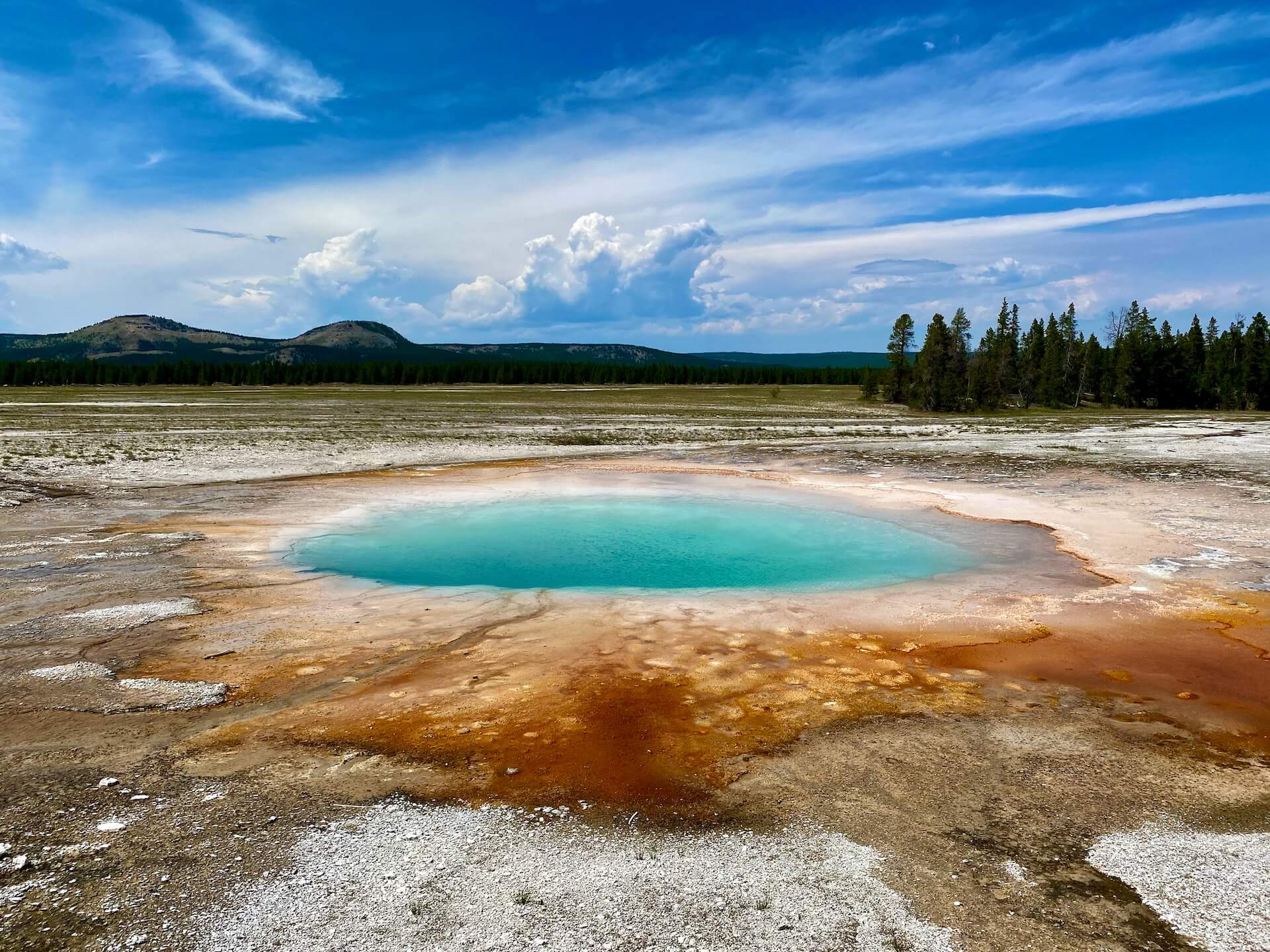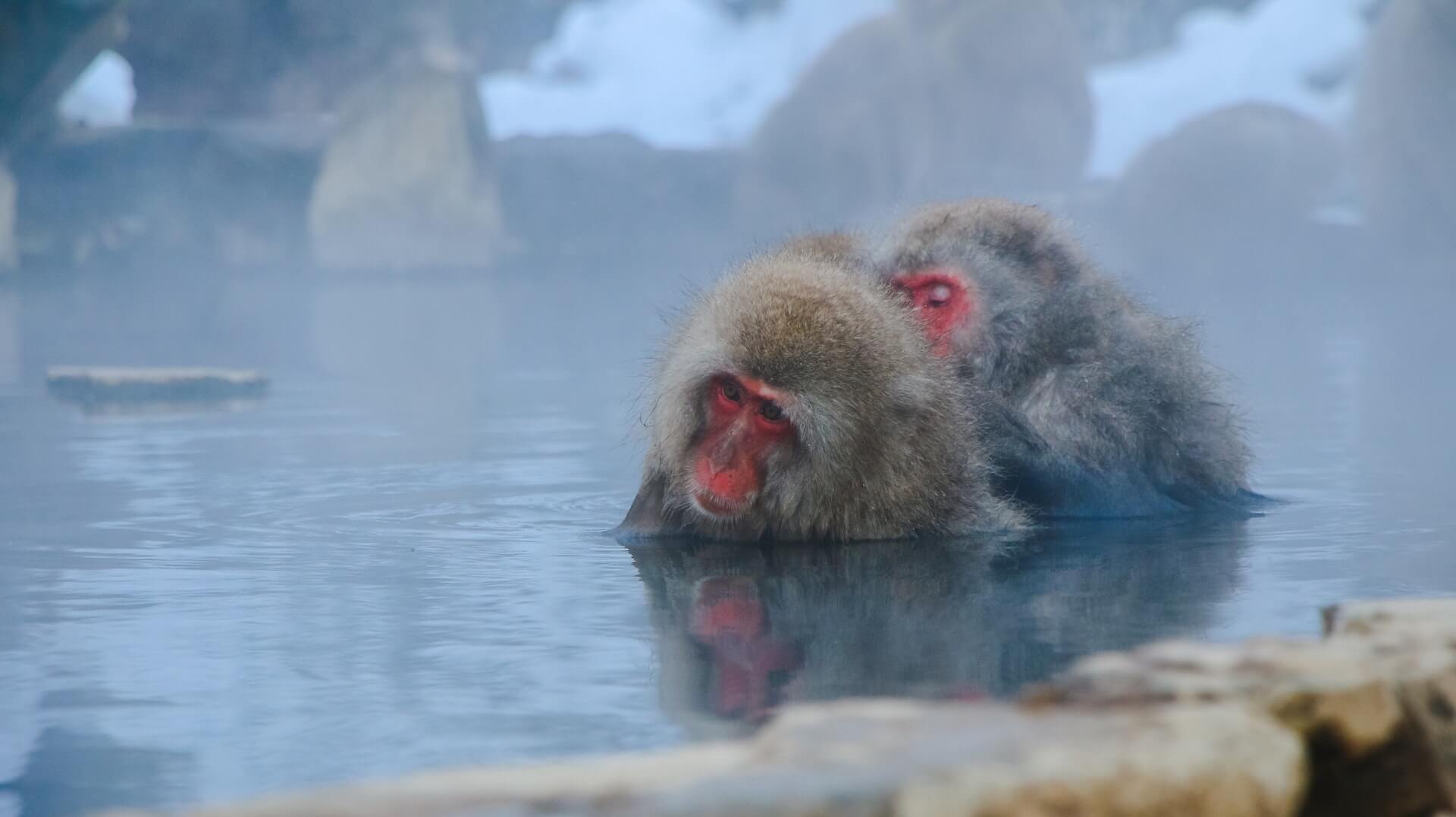Hot springs are renowned for their health and therapeutic benefits, but are they really as good as they are hyped up to be? In fact, are they even safe to swim in?
Some hot springs are safe to swim in, but others may be too hot, too acidic, or too contaminated. Always check the water temperature, pH level, and cleanliness before entering one. Avoid submerging your head, disturbing the sediment, or ingesting any of the water. If you have any cuts, wounds, or known health problems, consider sitting this one out.
In this article, we’ll go over whether hot springs are safe to swim in, its benefits, what you should be wary of before entering a hot spring, as well as other commonly asked questions you may be curious about.
Are hot springs dangerous?

Hot springs are like Earth’s natural hot tubs. The safety of swimming in a hot spring largely depends on its temperature, mineral content, and microbial presence. While many hot springs around the world are popular tourist destinations and safe for bathing, others can be dangerously hot or contain harmful substances.
Temperature: Some hot springs can reach boiling points or even higher, making it unsafe to enter. Before immersing oneself, always test the water’s temperature. Prolonged exposure to very hot water can lead to burns or heat-related conditions.
Mineral Content: Some hot springs have high concentrations of certain minerals that might not be suitable for all individuals. Those with sensitive skin might experience skin irritations.
Microbial Presence: Natural hot springs, especially those at moderate temperatures, can be a habitat for bacteria and other microorganisms. Some of these might be harmful to humans.
While many hot springs are safe for bathing, you need to do your research, heed local warnings, and take any necessary precautions to keep yourself safe when swimming in a hot spring.
How do you safely use a hot spring?
Using a hot spring can be a rejuvenating and relaxing experience, but only if you’re taking certain precautions. Here are some guidelines and recommendations for safely using a hot spring:
- Research the Hot Spring: Before visiting, gather information about the specific hot spring you intend to visit. Look into its temperature, depth, and any specific advisories or warnings related to it. Knowledge about its mineral content and potential microbial presence can also be useful.
- Test the Temperature: Before fully immersing yourself, dip your hand or foot into the water to gauge its temperature. Some springs can be scalding and might cause burns or other heat-related injuries.
- Limit Your Time: It’s generally advisable to limit your soak time, especially in hotter springs. Prolonged exposure to hot water can lead to overheating or dehydration. A good rule of thumb is to start with 10-15 minutes and see how you feel, extending your time as you get accustomed.
- Stay Hydrated: The heat can cause you to sweat and potentially become dehydrated. Drink plenty of water before, during, and after your soak.
- Be Aware of Slip Hazards: Natural hot springs often have slippery rocks or surfaces due to the growth of algae or the deposition of minerals. Wear water shoes or sandals with good grip and tread carefully.
- Don’t Dive or Jump: The depth of hot springs can be deceptive, and there might be submerged rocks or other hazards. Always enter the water slowly and avoid diving or jumping in.
- Mind the Local Ecosystem: Some hot springs are habitats for unique species of plants, animals, and microorganisms. Avoid using soaps, lotions, or other products that could contaminate the water and harm its natural inhabitants.
- Rinse Off After Bathing: Shower or rinse off after using a hot spring to wash away any minerals, bacteria, or residues that might be on your skin.
How hot can hot springs get?
Hot springs’ temperatures can vary widely depending on their geothermal source, altitude, and other factors. Some hot springs have lukewarm temperatures, while others can reach the boiling point of water (100°C or 212°F) or even exceed it.
There are instances of hot springs reaching temperatures of 250°F (121°C) or more, especially in volcanic regions. Always ensure you test the water’s temperature or look up local information related to the hot springs before entering.
How deep are hot springs?
The depth of hot springs varies widely based on their formation, location, and the geothermal activity that feeds them. Some hot springs are quite shallow, only a few feet or meters deep, while others can be much deeper, extending tens or even hundreds of feet below the surface.
In places with a series of hot springs or geysers, the depths can vary significantly even within a small area.
Just as you wouldn’t dive into any body of water without first knowing its depth, exercise caution and figure out the depth first as well as any potential underwater hazards before fully entering.
Information about specific hot springs, including their depth, is often available from local sources, park rangers, or guidebooks.
Are hot springs sanitary?

Commercial or developed hot springs that charge an entry fee are generally safe and clean, as they are required by law to treat and purify their water. However, primitive or wild hot springs may not be as sanitary, as they are exposed to the environment and other bathers and are not kept clean with any disinfectants.
Can you get an infection from hot springs?
Hot springs can host a variety of microorganisms, including bacteria. The warm and mineral-rich environment of many hot springs makes them ideal habitats for certain types of bacteria and archaea.
Some of these microorganisms are harmless and can even contribute to the unique colors and formations found in certain hot springs. However, others can be harmful to humans.
For example, some hot springs, especially those at moderate temperatures, can be habitats for the bacteria responsible for Legionnaires’ disease.
Another concern in some springs is the presence of the Naegleria fowleri amoeba, which can cause a rare and often fatal brain infection if it enters the nose.
Why do some hot springs have a sulfuric smell?
The distinctive sulfuric or “rotten egg” smell associated with some hot springs is due to the presence of hydrogen sulfide gas (H2S). This gas is produced deep within the Earth, where organic matter can be broken down in the absence of oxygen by bacteria and released into the water of the hot spring.
When the water rises to the surface and comes into contact with the air, the gas evaporates, producing the characteristic smell.
Apart from giving hot springs their distinct odor, sulfur and its compounds are often touted for their therapeutic benefits, though the smell can be off-putting for some visitors.
Are there benefits to bathing in hot springs?
Many cultures around the world have long believed in the therapeutic benefits of bathing in hot springs. These perceived benefits can be attributed to both the warmth of the water and its mineral content. Some of the commonly cited benefits include:
- Relaxation and Stress Relief: The warmth of the water can help relax muscles, reduce tension, and promote a feeling of well-being.
- Improved Circulation: Hot water immersion can increase blood flow and improve overall circulation.
- Skin Health: The minerals found in hot springs, such as sulfur, can help with certain skin conditions, like psoriasis or eczema. They can also cleanse and rejuvenate the skin.
- Joint and Muscle Pain Relief: The buoyancy of the water combined with its heat can provide relief from arthritis, muscle aches, and other physical ailments.
- Detoxification: Sweating in the warm water can help detoxify the body by expelling toxins.
However, while many people report feeling better after a soak in a hot spring, scientific evidence for some of these benefits is limited.
Furthermore, not everyone may experience these benefits, and some people (like pregnant women or those with certain health conditions) should consult a healthcare provider before bathing in hot springs.
Is it safe for pregnant women to swim in hot springs?
Safety concerns arise for pregnant women when considering hot springs due to the elevated temperatures. High external heat can increase the core body temperature, which poses risks during pregnancy. Elevated body temperatures, especially during the first trimester, have been linked to certain birth defects.
Doctors often advise pregnant women to avoid activities that can significantly raise their core body temperature, like using hot tubs, saunas, or immersing in hot springs. If a pregnant woman does choose to enter a hot spring, it’s recommended that the water temperature is not too high (preferably below 100°F or 37.8°C) and the duration is short.
Can hot springs damage swimwear or jewelry?
Yes, the mineral-rich nature of many hot springs can have adverse effects on both swimwear and jewelry.
Swimwear: The minerals and the sometimes acidic or alkaline nature of the water can cause discoloration or degradation of the fabric over time. The sulfur, often present in certain hot springs, can also react with the fabric, causing it to weaken or change color.
Jewelry: Metals, especially silver, can tarnish or discolor when exposed to the sulfur and other minerals commonly found in hot springs. Certain stones might also be affected by the mineral content or temperature of the water.
To prevent damage, remove your valuables before entering a hot spring and rinse swimwear thoroughly after use.
Why are some hot springs colored?
The colors observed in some hot springs are due to a combination of factors:
- Minerals: Different minerals dissolved in the water can impart various colors. For instance, copper can produce blue or green hues, while iron can give a reddish or orange tint.
- Microorganisms: Many hot springs, especially those in places like Yellowstone National Park, have vibrant colors due to thermophilic (heat-loving) microorganisms. These organisms thrive in the hot water and can form large communities, or “mats,” that have distinctive colors. For example, certain bacteria can give a bright orange, green, or blue hue.
- Depth and Clarity: The depth and clarity of the water can also influence its apparent color, with deeper waters often appearing bluer due to the scattering of light.
Do I need to shower after swimming in a hot spring?
It’s generally a good practice to shower after swimming in a hot spring. Here’s why:
- Removing Minerals: Hot springs often contain a variety of dissolved minerals that can remain on the skin after bathing. Rinsing off helps to remove these, preventing potential skin irritations or the drying effect some minerals can have.
- Microorganisms: Although many of the microorganisms in hot springs are harmless, it’s still a good idea to rinse off any bacteria or algae that may have adhered to your skin.
- Residue: Some hot springs can leave a sulfurous or mineral residue on the skin, which might be unpleasant for some individuals.
Using a gentle soap and fresh water can help ensure that any residues, bacteria, or minerals are effectively washed away.
Sources:

